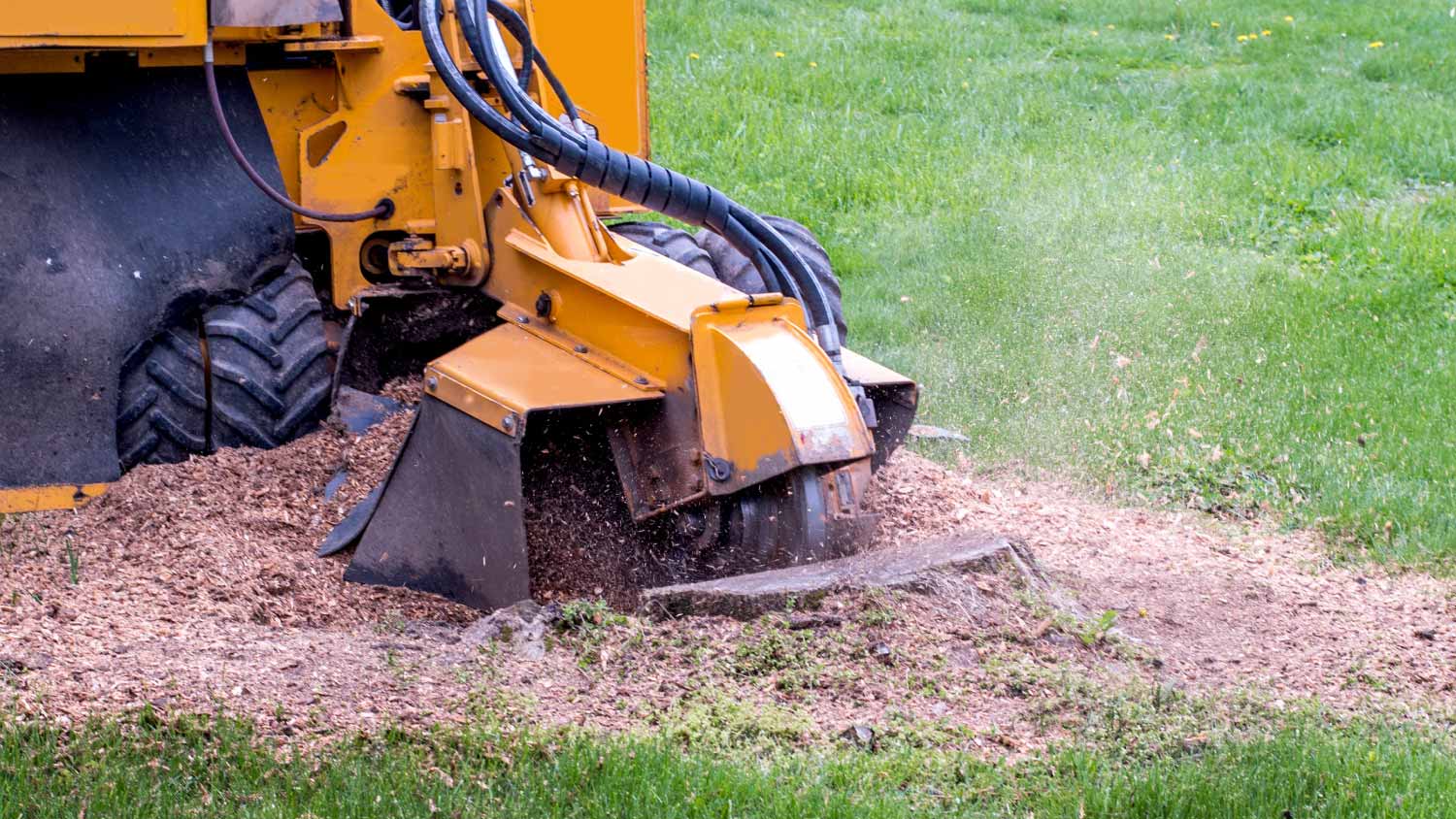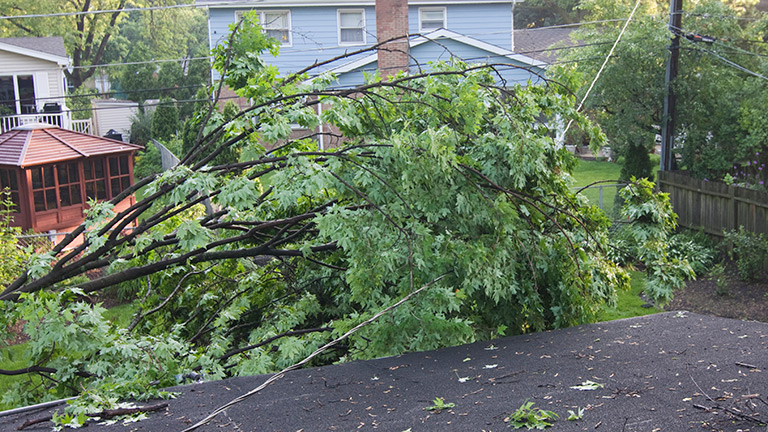
Learn how to budget for tree stump removal, exploring how factors such as the stump size, root system, and removal method affect your final bill.
Tree debris removal costs an average of $800 per job
Tree debris removal ranges from $200 to $10,000 depending on load size and complexity.
Most homeowners spend $800 for a standard cleanup job.
Professional service providers charge between $50 and $100 per hour for skilled labor.
The total cost depends on factors such as the type and size of debris, the labor required, and your location.
Hiring a professional tree debris removal service ensures efficient and safe cleanup, especially after storms or severe weather events.
This article was created using automation technology and thoroughly fact-checked and edited by HomeAdvisor Editor Ryan Noonan.
Cleaning up after tree work or storm damage doesn't have to break the bank. Tree debris removal costs between $200 and $10,000, with most homeowners paying $800 for a standard job. Various factors influence the final price, including debris volume, disposal method, and property accessibility. When branches, logs, and other tree waste need professional attention, understanding these cost factors helps you budget appropriately.
Several key elements determine your final bill when calculating tree debris removal expenses. Understanding these variables helps you anticipate costs and potentially find ways to reduce them.
The nature of your tree waste significantly impacts removal costs. Lightweight materials require minimal equipment, while heavier items demand specialized tools and more labor.
Fallen or cut tree branches cost $75 ot $250 to remove, while brush piles average $150 to $200 per trip. If necessary, you’ll pay $170 to $550 for the cost of tree stump removal.
The volume of debris directly affects your total cost, primarily because it determines how many trips to the disposal facility will be necessary. Most tree debris removal services will base their pricing on how many disposal trips your project requires. Each journey to the waste facility adds to your total.
| Number of Trips | Average Cost |
|---|---|
| 1 | $75–$250 |
| 2 | $150–$500 |
| 3 | $225–$750 |
| 4 | $300–$1,000 |
Different service providers offer varying expertise and equipment, which is reflected in their rates. Choosing the right professional for your specific needs can optimize your budget:
Local tree debris removal services handle woodchip and log removal for $25 to $50 per hour.
Landscapers remove woodchips, logs, and landfill for $40 to $100 per hour.
Waste removal services dispose of landfill for $75 to $125 per ⅛ truck load.
How your tree waste gets processed affects your overall expense. Options range from straightforward hauling to specialized processing.
| Disposal Method | Average Cost |
|---|---|
| Wood chipping | $50–$125 per hour |
| Log splitting | $50–$120 per hour |
| Dump disposal | $75–$250 per trip |
| Brush pile removal | $150–$200 per trip |
Accessibility matters significantly when determining removal costs. Debris that's difficult to reach requires more labor and time, increasing your expense. Neatly stacked materials near your driveway or street will cost less to remove than waste scattered throughout your property or located in hard-to-access areas. When debris has fallen in hazardous locations, such as on your roof, expect to pay more due to the increased risk and complexity.
Your geographic location influences tree debris removal pricing. Urban residents face higher rates due to increased operating costs, while rural homeowners might see higher travel charges due to greater distances to disposal facilities. Local disposal regulations and fees also vary by region, potentially affecting your final bill.
The timing of your tree debris removal project can significantly impact what you'll pay. Summer tends to be the busiest season for landscapers and tree services, often commanding premium rates. Winter offers the lowest prices, with potential savings up to 20% off standard rates. After storms, when demand surges, emergency services may cost an additional $100 to $150 per hour above standard rates. Waiting a week or longer after a storm can help you avoid these premium charges.
Different tree-related cleanup needs come with varying price points. Understanding these service categories helps you budget appropriately for your specific situation.
| Service Type | Description | Average Cost |
|---|---|---|
| Tree branch removal | Hauling away cut limbs | $75–$250 |
| Brush pile removal | Removing collected brush | $150–$200 per trip |
| Tree stump removal | Grinding or extracting stumps | $170–$550 |
| Yard cleanup | General debris collection | $125–$400 |
| Junk removal | General waste hauling | $60–$600 |
| Shrub and brush removal | Removing small woody plants | $25–$150 per plant |
Complete tree removal services cost $200 to $2,00, depending on size and complexity. This is distinct from debris removal and involves different equipment and expertise.
Taking on tree debris yourself might seem cost-effective initially, but several factors deserve consideration. DIY approaches require proper tools, safety equipment, transportation, and disposal fees. Additionally, cutting wood is easiest when it's fresh and green—once dried, it becomes much more difficult to process.
For smaller amounts of debris, using your weekly green waste pickup (where available) might be the most economical solution. Alternatively, you could transport materials to a local recycling center or landfill yourself, though fees will apply.
Professional services offer expertise, appropriate equipment, and efficient handling, which is particularly valuable for larger jobs or when dealing with heavy materials. They also carry insurance protection, reducing your liability if accidents occur during the removal process.
To keep the cost of tree debris removal down, consider the following budgeting tips:
Collect and stack debris neatly near the front of your property to reduce labor time.
Consider sharing costs with neighbors who also need debris removal.
If debris resulted from storm damage, wait at least one week before seeking quotes to avoid emergency pricing.
Request multiple estimates to ensure competitive pricing.
Ask about wood chipping instead of hauling if you can use the mulch in your landscape.
While emergency debris removal may be a one-time expense, most homeowners incur ongoing costs to remove tree remnants from their property.
Regular tree trimming and yard maintenance help prevent major debris accumulation. Scheduling routine pruning keeps branches manageable and reduces the likelihood of emergency removal needs. Preventative care costs less than reactive cleanup after neglect or storm damage.
If you manage smaller debris yourself, equipment maintenance becomes an ongoing expense. This might include chainsaw upkeep, trailer maintenance, or rental fees for specialized tools. Some communities offer subscription yard waste services for regular pickup, which can be more economical than one-time professional removal for frequent small cleanups.
When tree debris damages property, additional repair costs may arise. This could include lawn restoration where heavy equipment is operated, fence repairs from fallen branches, or structural fixes to buildings damaged by tree waste. Prompt debris removal helps minimize these secondary expenses by preventing further deterioration or damage.
Homeowner's insurance may cover tree debris removal in certain circumstances, particularly when storm-damaged trees affect structures on your property. Policy details vary significantly, so review your coverage carefully. When hiring professionals, verify they carry appropriate insurance to protect against potential damages during removal.
No place is more important than your home, which is why HomeAdvisor connects homeowners with local pros to transform their houses into homes they love. To help homeowners prepare for their next project, HomeAdvisor provides readers with accurate cost data and follows strict editorial guidelines. After a project is complete, we survey real customers about the costs to develop the pricing data you see, so you can make the best decisions for you and your home. We pair this data with research from reputable sources, including the U.S. Bureau of Labor Statistics, academic journals, market studies, and interviews with industry experts—all to ensure our prices reflect real-world projects.
From average costs to expert advice, get all the answers you need to get your job done.

Learn how to budget for tree stump removal, exploring how factors such as the stump size, root system, and removal method affect your final bill.

Budget for tree removal costs based on factors such as tree size, condition, type, accessibility, emergency services, additional projects, labor, and more.

Who will pick up stump grindings? See if a stump removal or landscaping service handles cleanup and what to confirm before you hire

Wondering who to call to grind a stump? Learn whether a stump removal company or tree removal service should handle your stump grinding—start here

Who to call for a sick tree? Learn when to hire an arborist or tree maintenance pro and what a diagnosis may cost. Start here

Who do you call for a tree on a power line? Learn when to call the utility company vs. a tree removal service and see how pros handle it